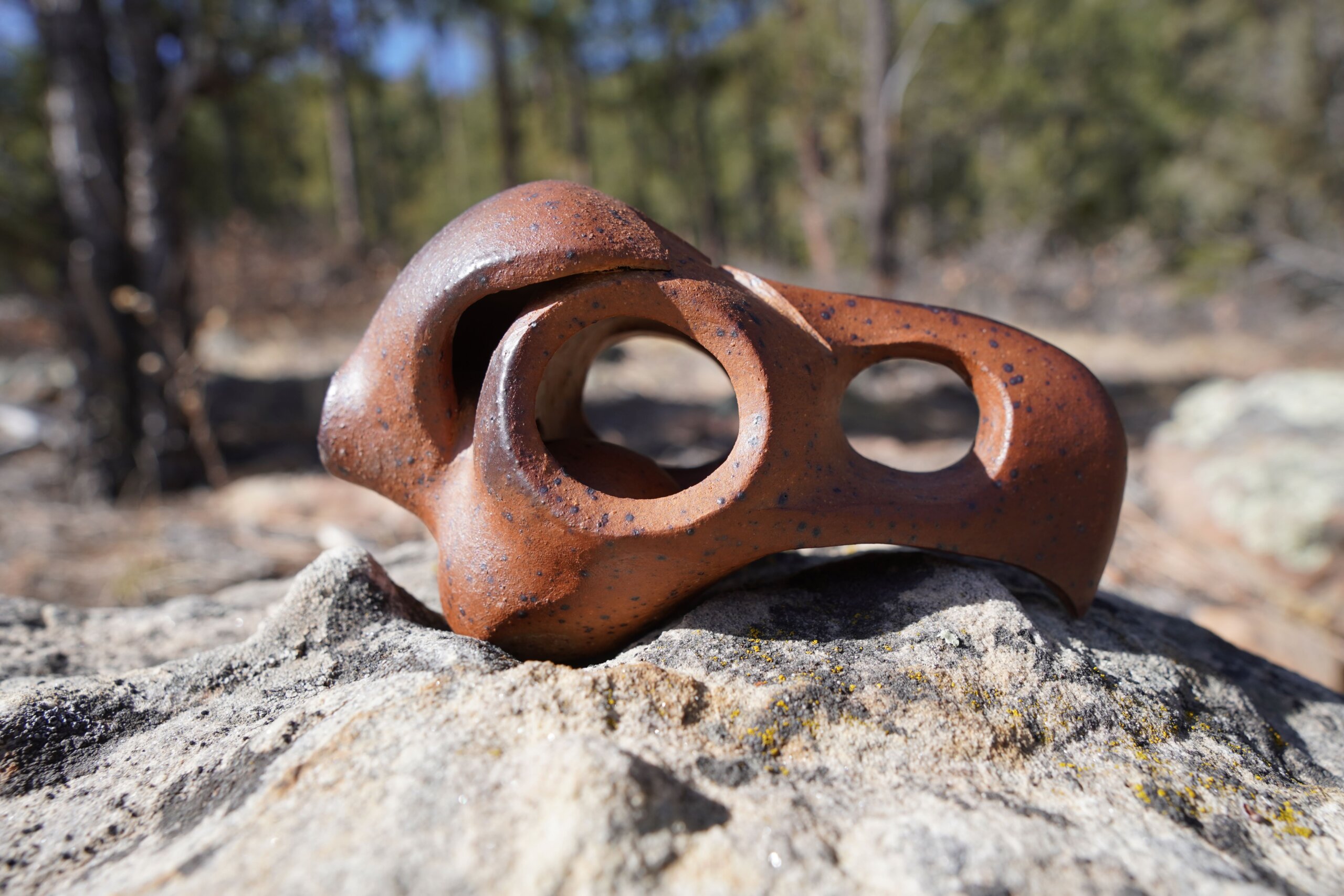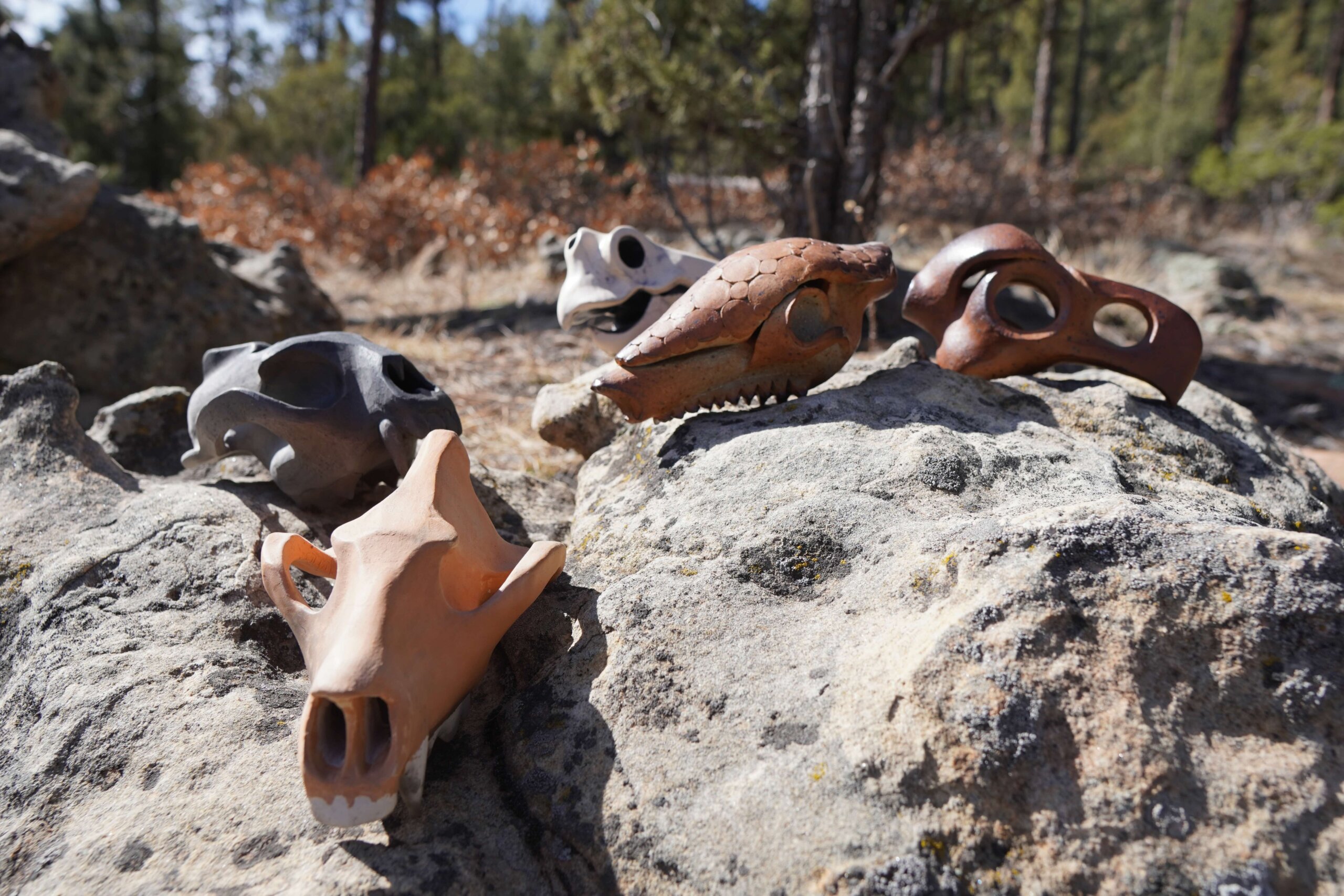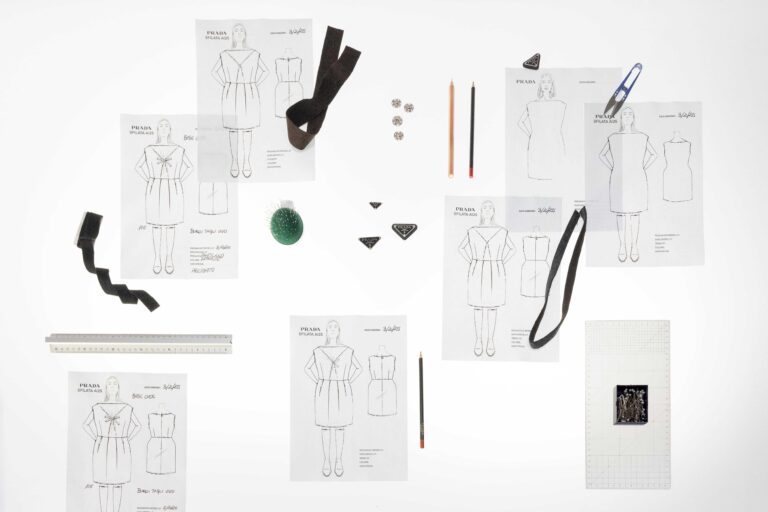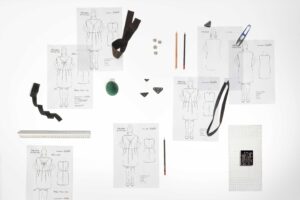
Visitors to Aspen this summer may hear a confounding chorus while walking through the streets of downtown. The din is a work by Cannupa Hanska Luger, the New Mexico–based artist and current darling of the biennial circuit. To create Volume, he sculpted clay whistles in the shape of animal skulls and programmed them to produce sound every hour using sensors and mechanical breath.
The installation is Luger’s contribution to AIR, the Aspen Art Museum’s inaugural retreat and festival that asks its participants to consider the role of art in our era of rapid technological transformation. For Luger, technology is not a product of any kind of industrial revolution, but of humans’ ongoing partnership with nature. In video, sculpture, and a variety of other media, he explores the legacy of extinct animals, the creative potency of Indigenous thought, and an expansive approach to thinking about time that might just be key to our survival.
Before he shipped out to Aspen, Luger spoke with CULTURED about his relationship to scientists, the history of whistles, and why no one can read his work wrong.
CULTURED: This year’s AIR presentation riffs on the theme “Life As No One Knows It.” What does that mean to you?
Cannupa Hanska Luger: It takes its title from Sara Imari Walker’s book of the same name, which I interpret as a declaration on how inanimate objects, minerals, or other materials can be transformed by life, and so are in fact life itself. As an Indigenous person, I see this as an acknowledgment and recognition of deep-time Indigenous knowledge systems. We’ve always understood that objects produced by culture carry life, carry essence, carry proof of, and therefore are life. So the AIR program feels validating; perhaps scientific rigor is finally aligning with our ancestral ways of knowing.
CULTURED: What made you choose the whistle as the subject of your work, and what possibilities does it unlock that sculpture alone can’t?
Luger: I chose this object because of its ancient and cross-cultural development and technology. We are in a living relationship with our environment—we are the objects we create. A handful of clay is sculpted into the form of a small whistle, and as a sculpture, it can only take up the space that a handful of clay can take up. But when activated with air, with breath, or with wind, suddenly this small handful of clay can fill an entire landscape.

CULTURED: If we closed our eyes in downtown Aspen, what sonic topography would your whistles sketch in the air?
Luger: The installation, called Volume, sounds throughout each day as an auditory time-keeping device. When activated, the whistles will both disrupt and harmonize, creating new sonic landscapes in collaboration with the environment. Each whistle presents its own unique tone, and together they become a piercing chorus, which I hope may disrupt people enough to change their focus and build their curiosity. If a person follows the sound, they will find small, hand-built clay whistles representing various vertebrate skulls. This artwork is a memento mori, a reminder that life is fleeting, time goes on.
CULTURED: These aren’t typical whistles. Can you trace their lineage—clay body to firing method to cultural resonance?
Luger: Globular whistle technology has been maintained for over 6,000 years and has hundreds of variations—ocarina, xun, tsuchibue, and gemshorn, to name a few. The general transformation from clay to ceramic is a record of humanity throughout time, and so I used a stoneware clay body and fired these objects using multiple techniques: pit fire, wood fire, and electric kiln fire. The clay forms depict skeletal remains of a fox, ocelot, vulture, armadillo, and turtle. I chose these small vertebrate skull forms as a metaphor for what it means to add life (breath) to something that may be considered dead (object)—to think deeply about what we consider to be alive.
CULTURED: Your work often invites participation and communal activation. Will festival-goers become co-performers in this aural landscape?
Luger: The audience, whether consciously or subconsciously, is always a participant in the experience of art. Every single person who comes across this installation, regardless of their attention or interest, becomes part of the creation of this work. A piece produced in a vacuum is not necessarily art—it must be a shared experience.
CULTURED: You’ll be showing alongside some other incredible artists. How have their contributions inspired you?
Luger: As an artist who often utilizes performance and works in opera at times myself, I am inspired by Jota Mombaça’s site-responsive opera The Muted Saints. Moving across musical genres and working with the breath, I am also inspired by André 3000’s live performance of New Blue Sun accompanied by multi-instrumentalists Carlos Niño and Nate Mercereau. I am inspired by all the AIR participants to jointly address the myths of our histories and relate generative paths forward collectively.

CULTURED: From “Future Ancestral Technologies” to your billboard caravans, you fold Indigenous storytelling into speculative futures. Where does this project extend—or subvert that?
Luger: My series of creative projects titled “Future Ancestral Technologies” describes the time-space continuum and in this ethos, I am not imagining futures, I am participating in the creation of futures, just like every single human being on the planet. And not just human beings; plant life, water, air, fire, and all other elements are generating futures by drawing on knowledge from the past. This work rests in a reality outside of concepts of linear time, outside of concepts dictated by scientists and biologists and theorists.
CULTURED: AIR’s lineup is thick with A.I. theorists and neuroscientists. Where do handcrafted ceramics—and the breath that animates them—fit into today’s hyper-digital discourse?
Luger: Working with a team, I have generated a mechanical breath for the ceramic whistles using time-based sensors to produce a sound composition on the hour, every hour. The ceramic whistles themselves are a record of human experience, and that is the baseline for artificial intelligence machine learning. These objects are the record of a long and deep timeline of trial and error, and ultimately proof that success was accomplished. This is exactly how artificial intelligence is trained. And so, these whistles are very much a part of this narrative. I would dare say these ceramic objects represent the base code for machine learning. I don’t see a separation between a craftsperson developing something as simple as a ceramic whistle and the development of satellite communication systems or A.I. It is all communication and technology.
CULTURED: In your broader practice, you talk about art as a rehearsal for real-world action. Are these whistles instruments of warning, wayfinding, celebration—or all three at once?
Luger: Art, at its core, is communication. Artists throughout time have been mirrors to take hyper-complex ideas and transform them into objects that the population can comprehend. What is interesting to me is that audience participation is a variable that is nearly incomprehensible, because every individual’s experience will mold and shape the communication that an artist produces. To some, the work I am presenting with AIR will be an alarm or warning; to others it will be a sonic tool for way-finding; and to others still, it will bring about feelings of ecstatic joy. Each perspective is valid. I cannot tell you what this work is about. You must experience it and decide for yourself, so this is a call to action.










 in your life?
in your life?

